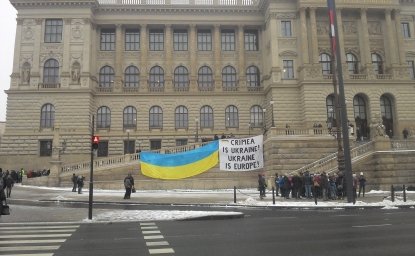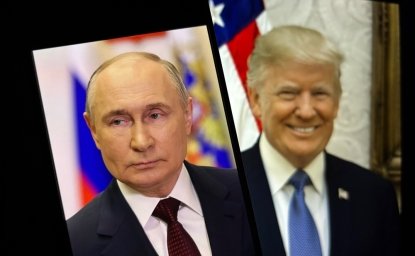Russia Counts: The 2002 Russian Census

"There are two aspects to consider with the Russian census," stated Cynthia Buckley, Associate Professor of Sociology and Associate Director, Center for Russian, East European, and Eurasian Studies, University of Texas, Austin; and former Title VIII-Supported Short-Term Scholar, Kennan Institute, at a Kennan Institute noon discussion on 18 November 2002. "One is the census as insight into state and society relations in the Russian Federation, and second, the census as what will be the best source of information on Russian society for the next few years." Buckley reported on her findings from a study of the Russian census administered through the Watson Institute at Brown University.
The census also provided an insight into Russian state capacity, Buckley stressed. Plans for a census in 1999 were put on hold following the Russian financial crisis in 1998, because of cost. The census had to be delayed five times, and finally took place three years later than originally anticipated. In January 2001, the Duma passed a law mandating a census in 2002. Arguments erupted immediately over the composition of the questionnaire, and it was not until the end of June 2002, less than four months before the census was to be conducted, that the final questionnaire was approved. The courts then voided the contract of the company hired to conduct the census two months before the scheduled start date. In spite of these delays and setbacks, Russia successfully completed its census over the period 9-16 October.
The census represented a massive effort by the state. Over 430,000 temporary employees were hired to enumerate the population. Questionnaires were completed in face-to-face interviews, by telephone, and at drop-in locations set up in both rural and urban areas. To encourage participation, the government set up a web site and a twenty-four hour hotline. State publications had advertisements for the census, and a television advertisement campaign was launched that featured Putin extolling the importance of the census. School children were encouraged to push their parents to participate, and some religious leaders called for their congregations to participate, calling it a "holy duty." In the end, the promotional campaign was a surprising success. According to Buckley, in interviews with enumerators that were conducted in twenty-two regions, "enumerators reported that refusal rates were extraordinarily low…the highest refusal rate was in Kazan, and that was only 4 percent."
A variety of serious problems plagued the census, which, Buckley claimed, will ultimately raise questions about its accuracy as a demographic picture of Russia. Interviews were not conducted in a consistent manner, as training for the enumerators varied widely – some received two days of training, others only informal training. More seriously, enumerators were given different instructions in different regions, based on how a given region wanted to influence the results. The lists for the enumerators were drawn up on the basis of registration information, and those not registered were not likely to fall on the lists of the enumerators. This led to undercounts of not only homeless and migrant populations (especially among working age males), but even among residents of some newly constructed housing. And while some populations where undercounted, others were likely to be double-counted. Property owners who owned two residences were likely to be counted twice. Regional leaders, who had an incentive to boost their numbers as high as possible to increase the budget they would receive for social spending, would fill out forms for everyone registered as a property owner based solely on the registration information. When asked about this practice, according to Buckley, they would respond: "If they receive multiple forms with the same names the computer will catch this."
Another source of inaccuracy comes from the responses of the interviewees. Unlike the previous Soviet census in 1989, respondents were not required to provide documentation when stating their ethnicity. In a few cases, this led to such amusing self-identifications as "Hobbits" and "Elves." More seriously, minority ethnicities sometimes felt compelled to self-identify as something more regionally palatable. For example, Buckley reported that in the region of Krasnodar, where the Armenian population experiences persecution, many were reluctant to identify themselves as Armenians on a government census questionnaire.
The Russian census will be an important source of information, said Buckley, but one with which care must be taken in interpreting the data. Significant differences in question wording will make comparative analyses of the 1989 all-union census of the Soviet Union (the last source of nationwide data) and the 2002 census difficult. Buckley predicted that the Russian census might be in the ballpark with regards to its aggregate numbers, considering the over- and under-counts across the nation. At the oblast level, however, the data will be very questionable. "You can't really look at the numbers as demographic truth," concluded Buckley, "indeed, we need to look at them as political constructs."
Author


Kennan Institute
After more than 50 years as a vital part of the Wilson Center legacy, the Kennan Institute has become an independent think tank. You can find the current website for the Kennan Institute at kennaninstitute.org. Please look for future announcements about partnership activities between the Wilson Center and the Kennan Institute at Wilson Center Press Room. The Kennan Institute is the premier US center for advanced research on Eurasia and the oldest and largest regional program at the Woodrow Wilson International Center for Scholars. The Kennan Institute is committed to improving American understanding of Russia, Ukraine, Central Asia, the South Caucasus, and the surrounding region through research and exchange. Read more

Explore More
Browse Insights & Analysis
The OSCE is a Good Value for America

Infographic | Russia's Illegal Annexation of Crimea

Russia’s Indigenous Communities and the War in Ukraine
